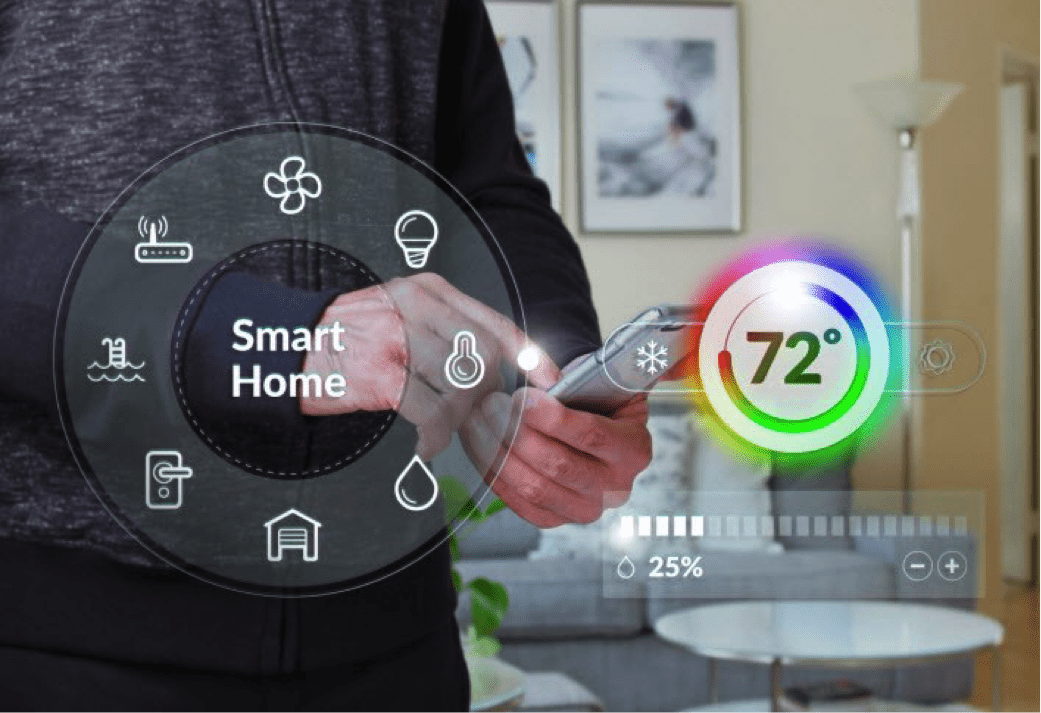At a basic level a building — whether it was a primitive shelter or a modern steel and glass structure – is expected to provide a comfortable space for its occupants inside. The Internet of Things (IoT) transforms buildings from just being a ‘container’ for its occupants to being more cognitive and thus helping the occupants be more productive while minimizing the operational cost as well as environmental impact.
Making a smart building requires intelligent lighting, HVAC, fire alarms, building security and even elevator systems that are aware of each other and share intelligence so that the buildings can quickly adapt and respond based on needs of both occupants and the grid.
Even though operational costs for a smart home or smart building may be low, and home and building owners can save long-term energy and costs; but the short term still requires investment in deploying intelligence systems with sensor networks, gateways and cloud computation capabilities. A video doorbell is easily 10 times more expensive than a traditional doorbell; the same holds true for smart thermostats. So why are we as customers willing to pay the premium? It’s kind of all the more important to understand this from home automation point of view as the decision to make a home smarter or not is voluntary, but increasingly more of us are choosing this option.
One reason technology is making IoT more practical and affordable is the combination of smart sensing across multiple physical parameters and connectivity within a smart thermostat and video doorbell as well as the availability of smartphones that enables consumers to not only be surrounded by smart sensors and controls in their homes like an elock and video doorbell, but also let them manage those smart objects more effectively than ever before. The second reason is familiarity. Most consumers find it rather challenging to program a schedule on their sprinkler system. Because smartphones have become so ingrained in our lives, a smartphone application controlling our sprinkler system is often easier to interact with than a decades-old, product-specific human machine interface. The third reason is convenience: consumers can control their home even when they’re not inside – opening the garage door remotely or sending the secure authentication of a smart lock via an app. Some upfront costs on DIY home automation kits can help homeowners save on recurring third-party monitoring charges by providing sensors for water-leak detectors, door and window sensors, and video cameras for self-monitoring.
When it comes to commercial smart buildings, a key design consideration is often energy-efficiency and regulations like the California Energy Commission’s Title 24. Today, commercial buildings represent 40 percent of all U.S. energy consumption. A significant portion of that percentage is spent on heating, ventilation and air conditioning (HVAC). Having demand-controlled ventilation based on people counting can result in 15-20% savings compared to a fixed HVAC schedule. Adjusting the indoor light of a building based on the occupancy as well as the outside light coming in (a daylight harvester) can also help reduce the energy footprint of a building significantly.
Imagine using Bluetooth® low energy beacons to navigate through a complex maze of office spaces to find a conference room and not waste significant time just been lost or in a similar analogy not wasting time waiting for an elavator, rather elevator is there when you need it and is also pre-programmed to the floor you are headed, Imagine smart sensors can detect HVAC and elevator performance and accurately gauge predictive maintenance thus minimizing any downtime. These all lead to increased productivity of its occupants as a building is constantly processing and adapting.
A network of smart connected sensor nodes increasingly require to be run on batteries, and thus require a long battery life in order to avoid frequent battery replacement and incur maintainence costs. To address this challenge, any solutions will have to include a holistic system approach to implement, with low-power analog or nanopower analog for sensor processing; low-power management with extremely low Iq; and connectivity solutions that can quickly wake up, perform complex calculations like fast Fourier transform and then go back to sleep.
At CES this week, we see many technologies from TI and others that demonstrate how far we’ve come to building a smarter home or building. Some of demos include:
• IoT gateway demonstration: Includes multiple sensor nodes like carbon monoxide detector, occupancy detection, Temp Humidity sensor node that are shown with 10 years battery life on a coin cell as well as an e-lock that shows 5 years battery life with four AAs.
• Dual-band Sub-1 GHz and Bluetooth® low energy Sensor to Cloud with IoT gateway: Experience how to connect one, two or up to 50 sensors to the cloud over a long-range Sub-1 GHz wireless network, suitable for industrial and consumer applications such as building control and asset tracking. The demo and associated Sub-1 GHz Sensor to Cloud Industrial IoT Gateway Reference Design is powered by a TI Sitara™ AM335x processor and SimpleLink™ Sub-1 GHz CC1310 and dual-band CC1350 wireless microcontrollers (MCUs).
• Ready for Bluetooth 5? Get a sneak peek into the Bluetooth 5 standard with a demo showcasing 2Mbps mode which enables two times the speed of Bluetooth 4.2, faster over-the-air updates and increased responsiveness with TI’s SimpleLink™ Bluetooth low energy wireless MCU for IoT applications such as medical, health & fitness, wearables, remote controls, building automation and automotive (body control and lighting, infotainment).
• Keep up with other demonstrations and technologies from TI at CES.












